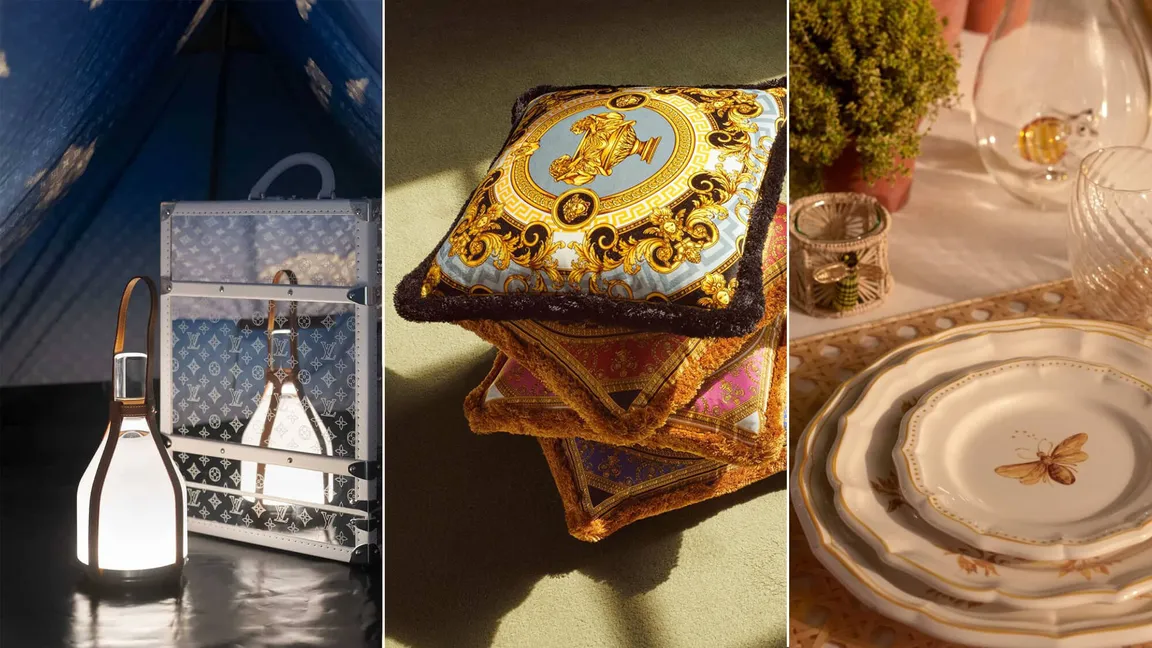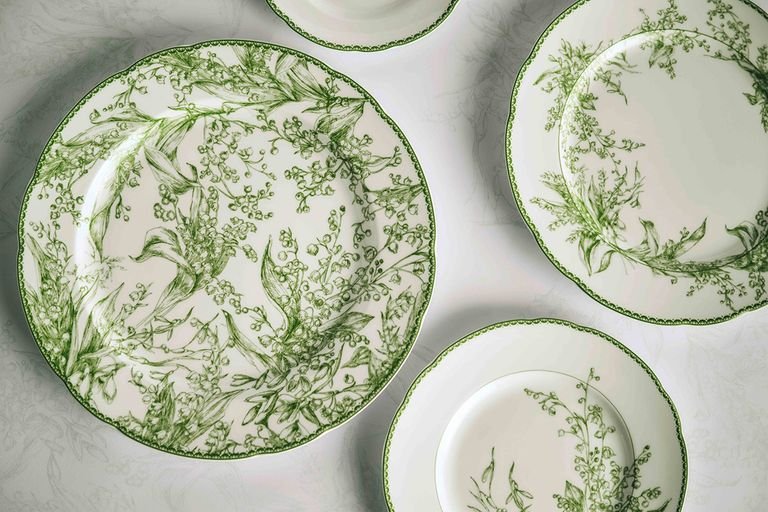Why Fashion Brands Are Selling Plates and Beds?
Renowned names like Dior, LV, and Versace are filling every square meter of your house with their furniture lines. Is this a new strategy to tap into new revenue streams, or is there a deeper motive at play?

Fashion is making strong strides into interior design | Source: LV, Versace, Dior
In today’s landscape, many fashion brands are expanding into other sectors like furniture and home goods without deviating from their core design values. Collaborating with furniture design companies or real estate developers is a rapidly growing trend in the industry.
A recent report by Mordor Intelligence estimates that the global luxury furniture market is expected to grow by 4.7% from 2018 to 2023.
However, the reason fashion houses are venturing into the furniture industry is not just about profits; it’s also about solidifying their position, spreading their aesthetic philosophy, and sometimes “gaslighting” consumers about what they should be shopping for.
Fashion Houses Branching into Furniture
The furniture market is now a playground for long-established fashion names. Louis Vuitton, a French fashion house, has a separate branch dedicated to selling furniture, including floor lamps, carpets, chairs, bath towels, and scented candles, all with staggering price tags. In addition to LV, Dior also has a division named Dior Maison, specializing in finely crafted dinnerware.
Meanwhile, the familiar face in the world of the super-rich, Elie Saab, entered this field by introducing handcrafted furniture following haute couture standards. In May 2022, Dolce & Gabbana (D&G) joined the furniture industry by opening its first store exclusively selling these products in Milan.

Many pieces of furniture are designed by fashion brands | Source: Bagaholic
Apart from conventional products, some fashion houses have introduced peculiar items to spark curiosity. Examples include Gucci-scented candles and Supreme-branded bricks for building houses. However, alongside these “playful” products, conveying the aesthetic taste of the fashion house into furniture is a more serious and sophisticated endeavor.

Fashion and interior design are a combination that elevates designs and living spaces | Source: Elie Saab
The reason is that furniture is considered a lifestyle product, becoming luxurious when crafted with precision and sophistication. In European countries, besides fashion houses, traditional craftsmen in furniture making, handmade decor, ceramics, and crystal have a long-standing and esteemed history, often preferred by the super-wealthy.
Why Do They Do It? Unveiling the Intriguing Fusion of Fashion and Home Décor
1. Pleasing the “Home Addicts” Craze
– Beyond just boosting sales, the introduction of home-focused product lines by fashion houses reflects a societal shift. Renowned fashion designer Nicole Miller emphasizes, “The world is drowning in clothes. People are changing, prioritizing the experience of living spaces over mere clothing.”
– Picture a comfy lounge chair, a snug blanket, or beautiful dish sets – items that add joy to daily life. These aren’t just products; they set the stage for shared activities like dinners with friends or a cozy Netflix night. It’s the emotional experience that clothing alone cannot replicate.

Users are increasingly inclined to invest in living spaces rather than clothing | Source: HomeStoreAtoZ
2. Home Goods for a Healthy Lifestyle Feel
– Purchasing home goods creates a sense of encouragement for a healthier lifestyle. The responsibility felt when buying for one’s home or family stems from the alarming pace of disposable fashion trends. Investing in durable home items contrasts with the transience of fast fashion, offering a more substantial and long-lasting connection.
3. Ambitious Formation of an Aesthetic Ecosystem
– Fashion designers aspire to extend their artistic vision into as many spaces as possible. Jason Wu, a prominent fashion designer, expresses, “When I work, I think about designing holistically. How can what I create resonate with a client’s entire lifestyle?”

Fashion designers always seek to extend their aesthetic into various fields | Source: Versace
– Fashion houses are committed to filling customers’ living spaces with their aesthetic presence, often collaborating with professional interior designers and artists across various domains to revitalize collections annually.
How do Fashion and Interior Design Support Each Other?
– Fashion and interior design form a symbiotic relationship, mutually reinforcing their shared aesthetic principles. While they share common ground, the timing differs – fashion trends often pave the way for interior design trends. However, the inherent ephemerality of fashion trends contrasts with the more enduring nature of furniture and home designs, allowing the aesthetic created by a fashion designer to persist through their crafted home goods.

Fashion and interior design always complement each other | Source: Dior
“Fast Homeware”: Is it Becoming the Second Fast Fashion?
In the ever-evolving world of fashion, the phenomenon of “lookalike and cheaper” versions of renowned designs has long been associated with fast fashion outlets. Recently, a similar concept has emerged in the realm of home decor – the fast-homeware trend is gaining momentum.
Much like fast fashion’s norm of releasing new clothing sets daily, fast-homeware normalizes the constant adjustment, updates, and redesign of living spaces. Purchasing furniture from emerging brands like Boohoo, Pretty Little Thing, and Missguided has become viral content on platforms like YouTube and TikTok, with trending items such as checkered tablecloths, tiled coffee tables, and wavy mirrors capturing the enthusiasm of the younger generation.

Not only fast fashion has a negative impact, but fast furniture can also have adverse effects | Source: Pinterest
However, the question arises: Is fast homeware posing a threat similar to fast fashion?
Fast homeware arrives at a time when many are already aware of the harmful effects of fast fashion. Hence, despite the appeal of new home goods, customers are increasingly concerned about sustainability. Data released by eBay reveals that searches for “eco-friendly furniture” and “sustainable home decor” increased by 123% and 171% respectively between 2019 and 2020. These signs indicate that aesthetically pleasing, fashion-forward home items might have a longer lifespan in your home.
Nevertheless, if fast homeware inadvertently harms the environment just like fast fashion, the fault may not solely lie with manufacturing companies but also with consumers. Those who champion humanitarian causes might find themselves inadvertently contributing to the problem by succumbing to the allure of affordable yet environmentally damaging home goods.

